This page journals various common-mode choke impedance measurements.
In general, it's far better to measure the common-mode isolation with 50R source and load using a VNA S21 measurement, rather than by measuring the impedance. This is because the accuracy of the impedance result (using a VNA) degrades the further it is from 50R.
Laird 28B1020-100
W2DU-style
These measurements were a result of a conversation with G3UEG (Dave) about what ferrite material would be a good choice for his 10m and 6m yagis. He wanted to use a W2DU style, where beads are threaded onto the (10.3mm OD) coax directly. He also wanted to know how many should be used. Initially we thought Fair-Rite 2631102002 (type 31) beads would be the most suitable, but these proved expensive and difficult to obtain. The Laird parts were suggested by DigiKey to Dave as a possible alternative. Dave sent five of them to me, which I subsequently measured. Here's a photo of the test setup:
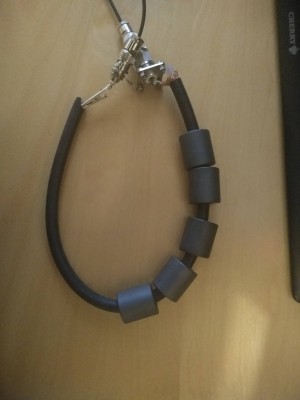
A 50cm length of RG213 was used to perform the test. With no beads at all, this was S21:
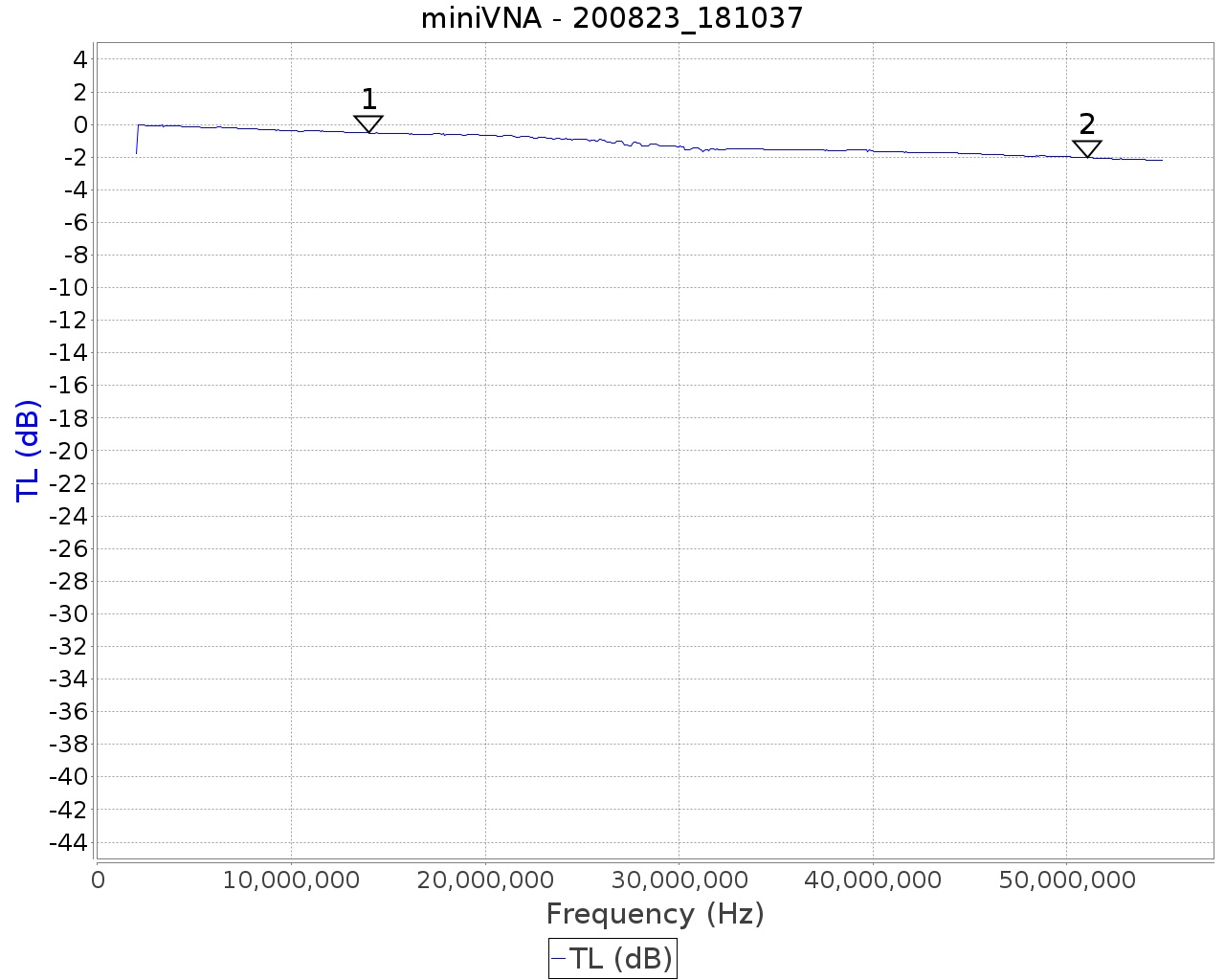
The loss is due to the inductance of the braid. It's only a couple of dB at 50MHz. I then progressively added beads, with the following results:
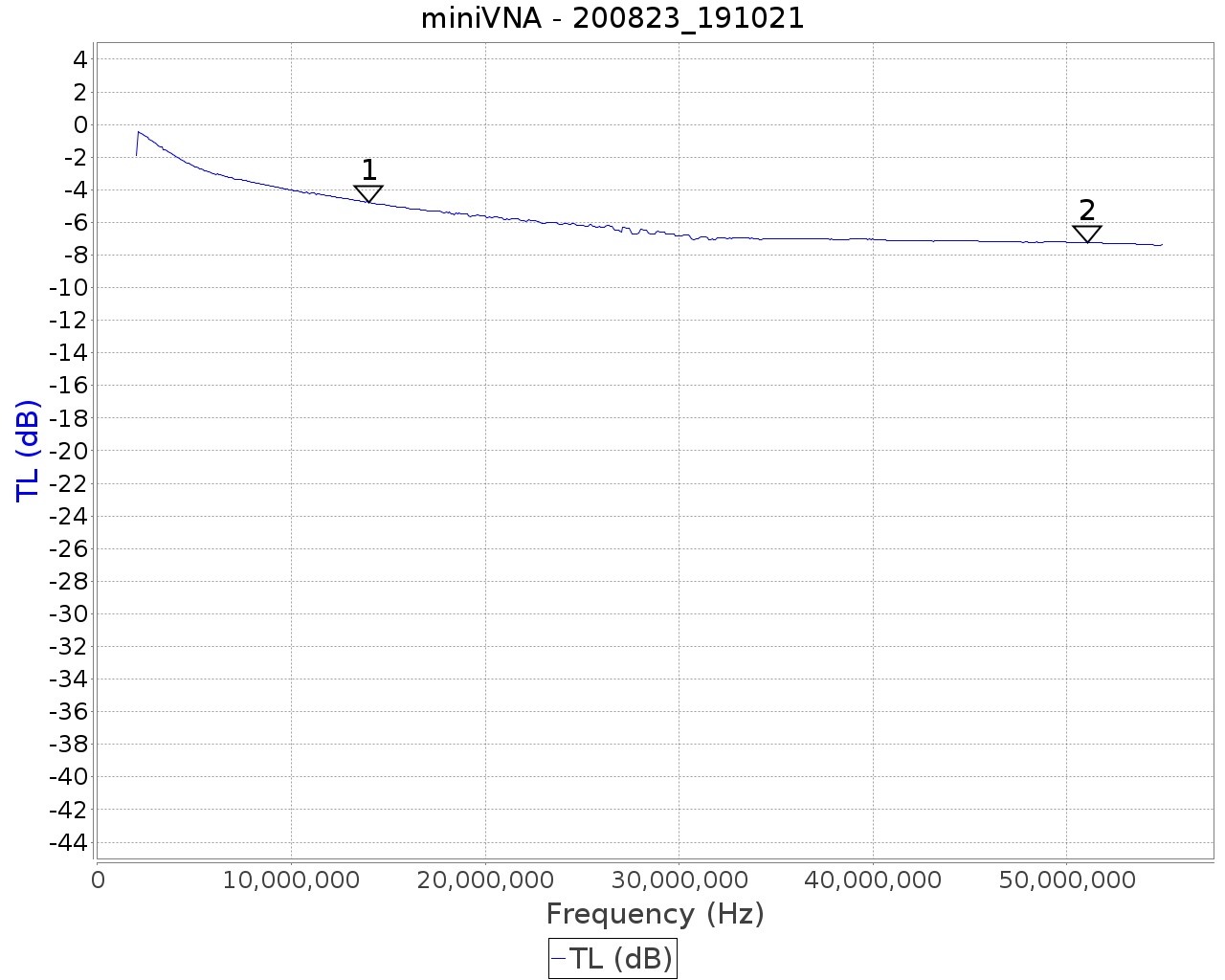
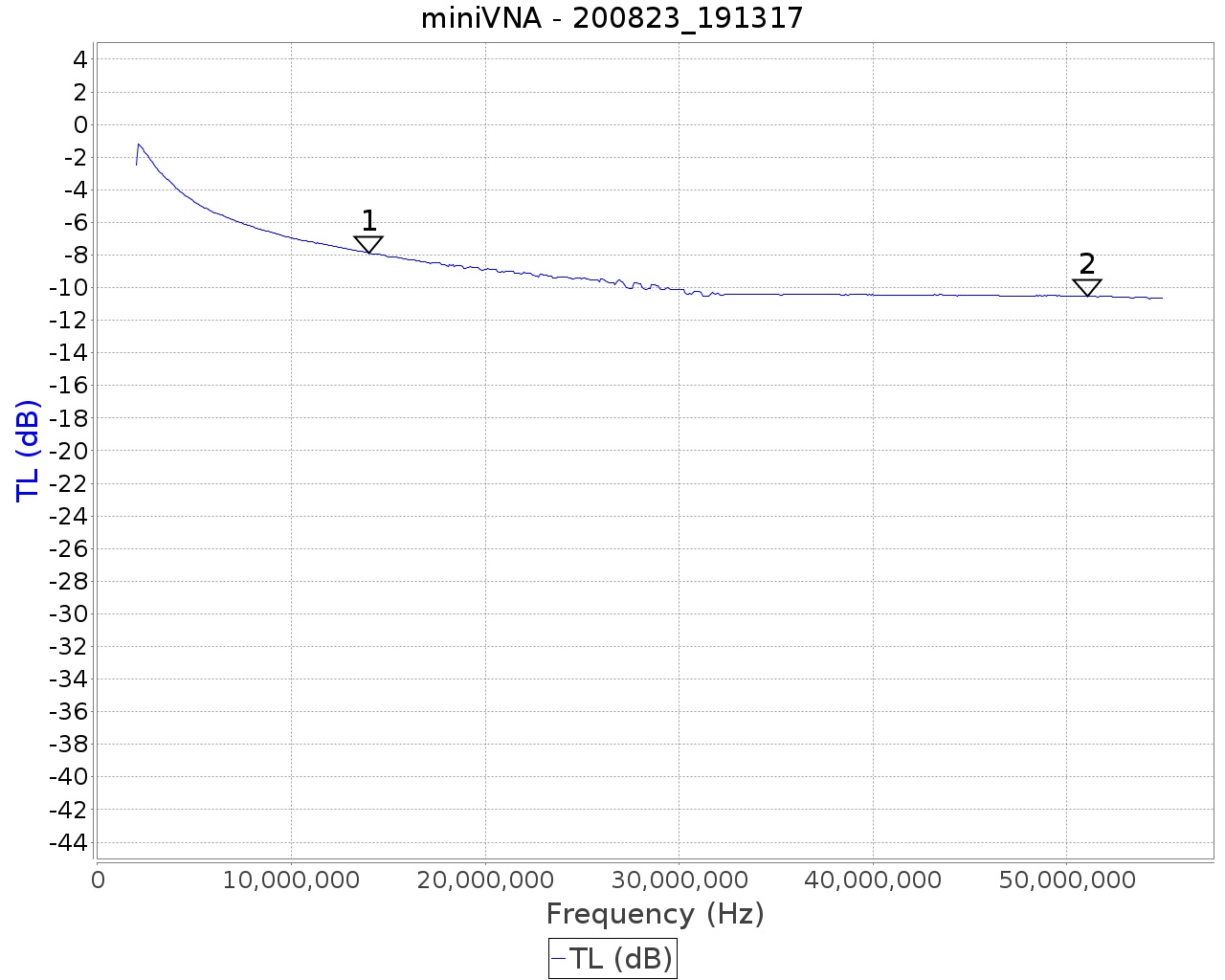
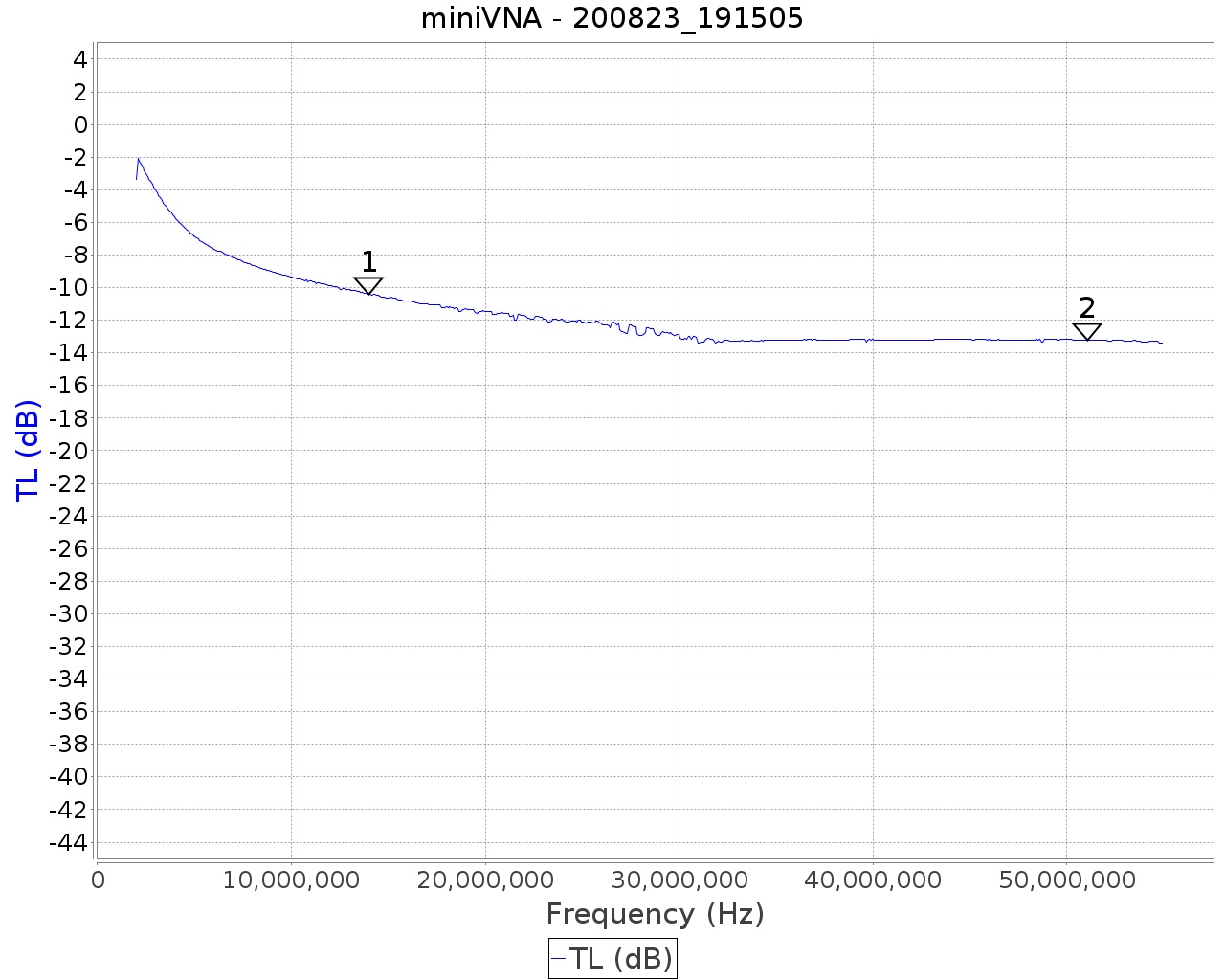
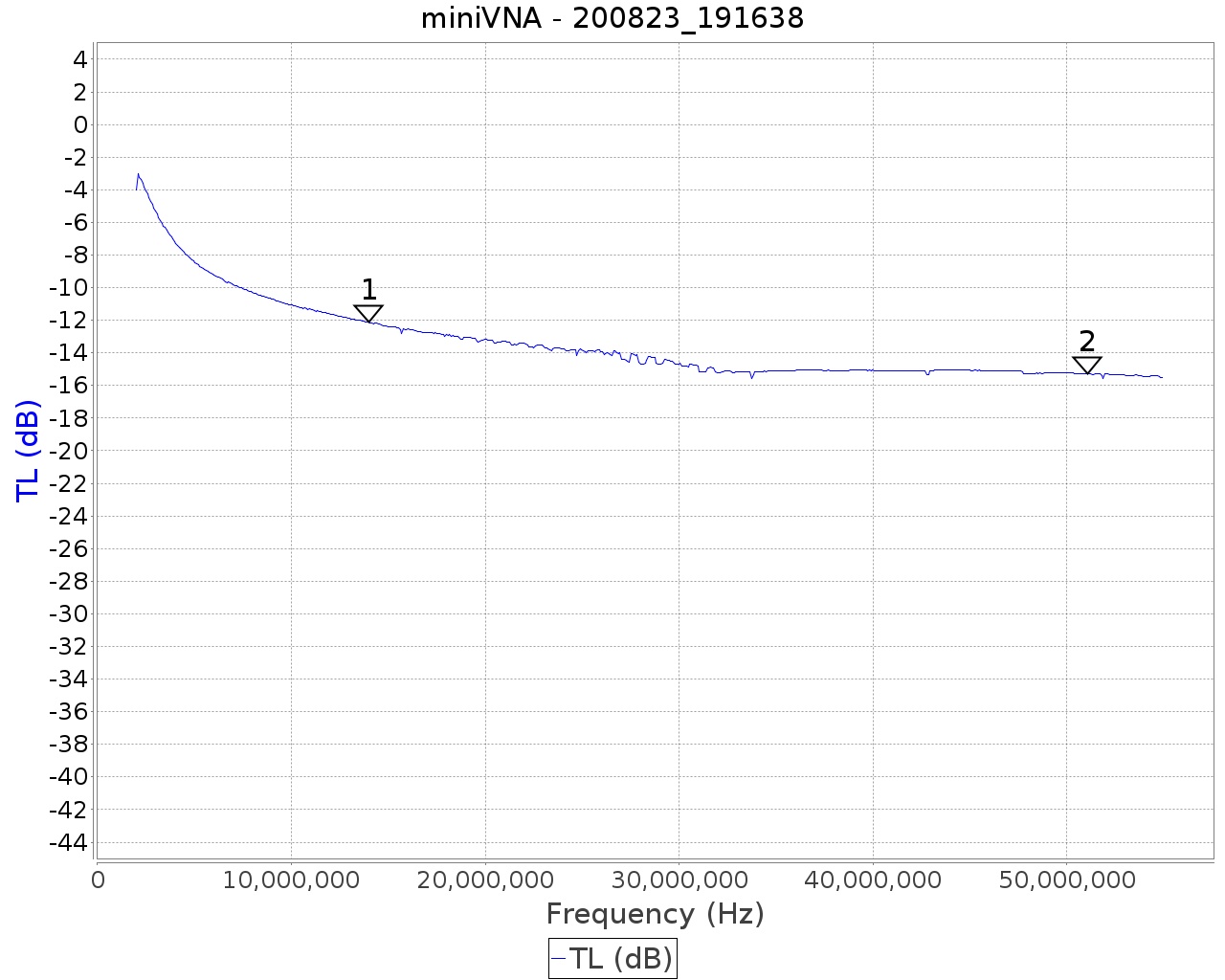
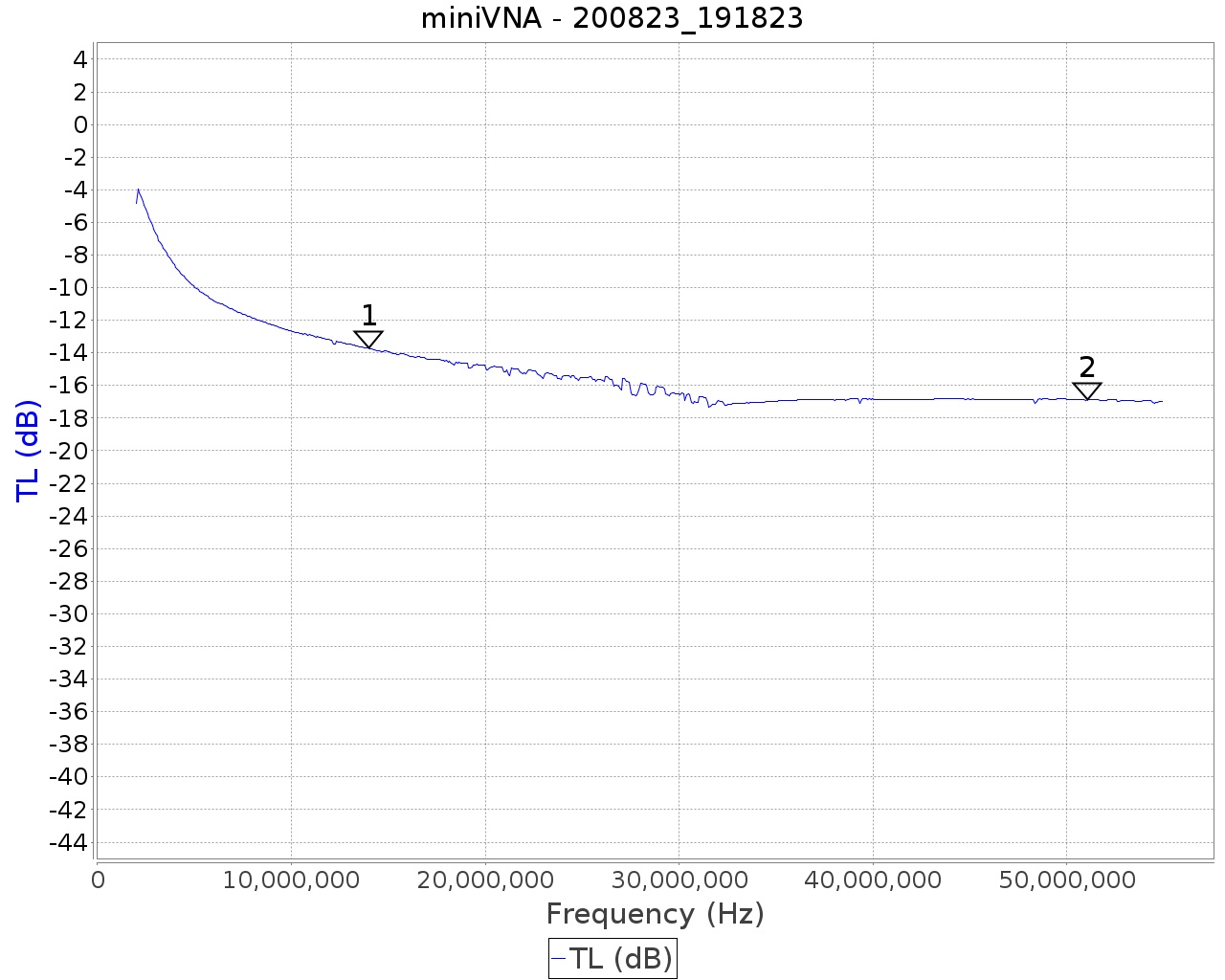
Disconnecting one end gives in excess of 40dB isolation, proving
that the test setup doesn't have a problem with ultimate rejection.
Plotting S21 at 52MHz vs. the number of beads reveals that there are
diminishing returns:
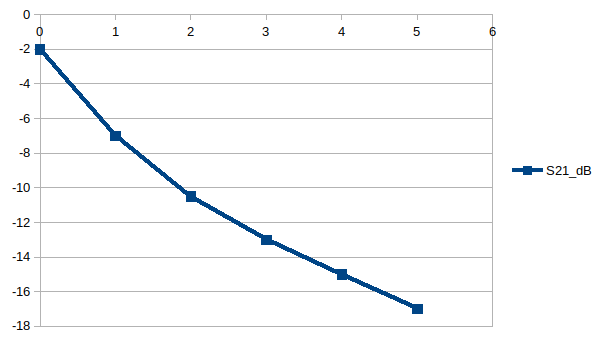
It's a shame I didn't have more beads, but the final three points suggest it asymptotes to a 2dB/bead slope. A good minimum target is 20dB, so subtracting the 2dB due to the cable self-inductance, another 3 beads (8 overall) seems suitable. It's perhaps unsurprising that you can't assume the choking impedance of a single bead can be multiplied by the number of beads, but it's nevertheless an important point because the manufacturer generally only gives the impedance for a single turn.
Multiple Turns
I must say I found the W2DU style unimpressive. Getting more than one turn on ferrite gives you more 'bang for your buck', because inductance goes as N2. Obviously, this is impossible with 10.3mm OD coax, but it is with 5mm coax. It turns out that you can get 3 turns of RG58 or equivalent through the bead. Given the required bend radius, RG400 would be a better choice because the PTFE dielectric avoids migration of the inner conductor. RG58 uses polythene, which does suffer from this effect at temperature.
For test purposes, we start with a 70cm length of RG58 and no ferrite:
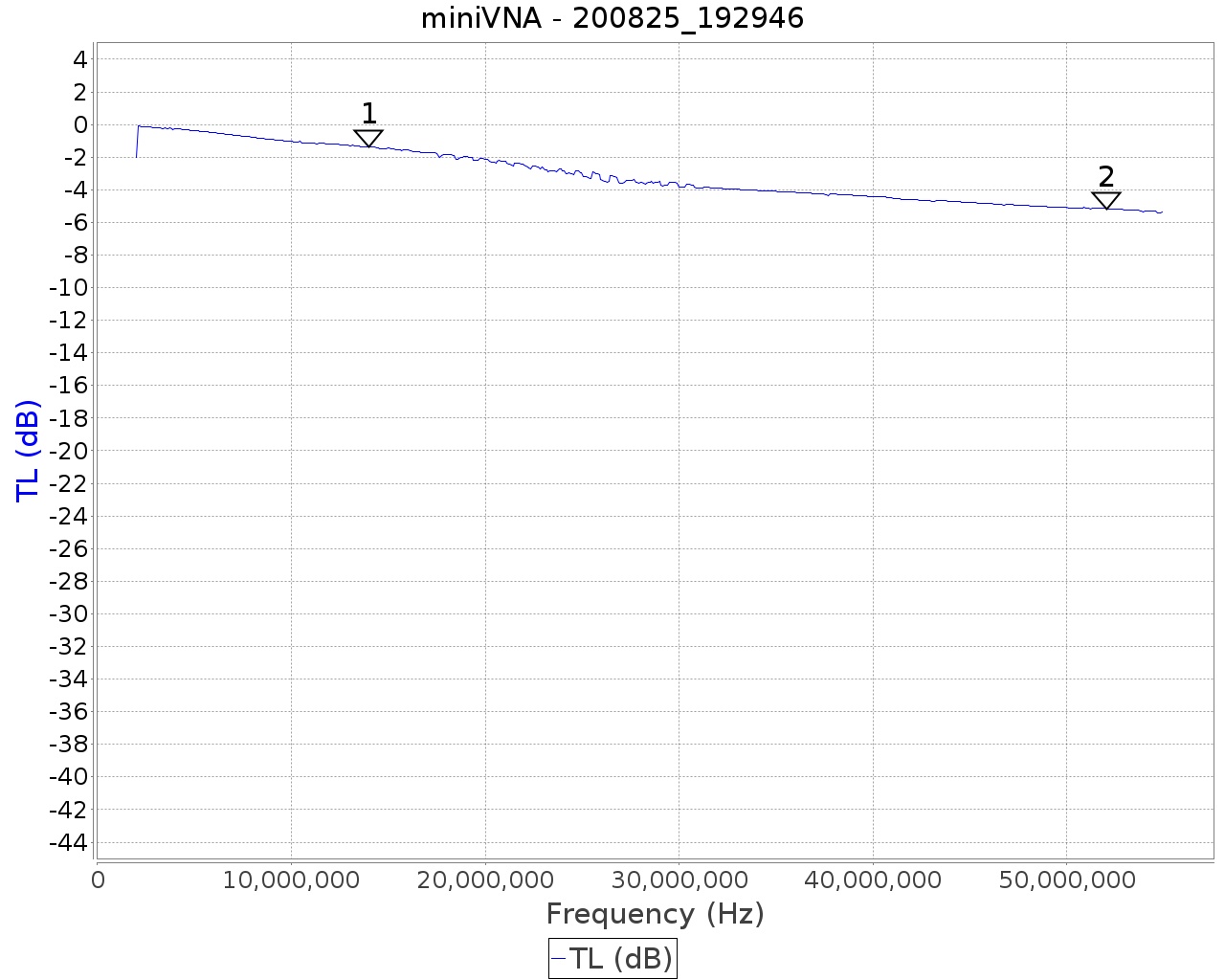
There's a bit more loss compared to the 50cm of RG213 both because of the extra length and because the thinner diameter of coax increases the inductance per unit length. This is the result with the 3 turns:
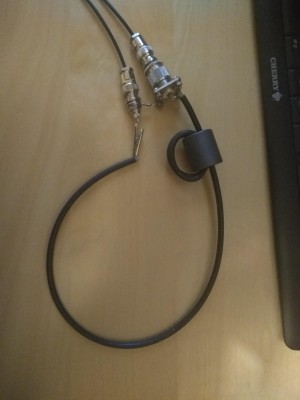
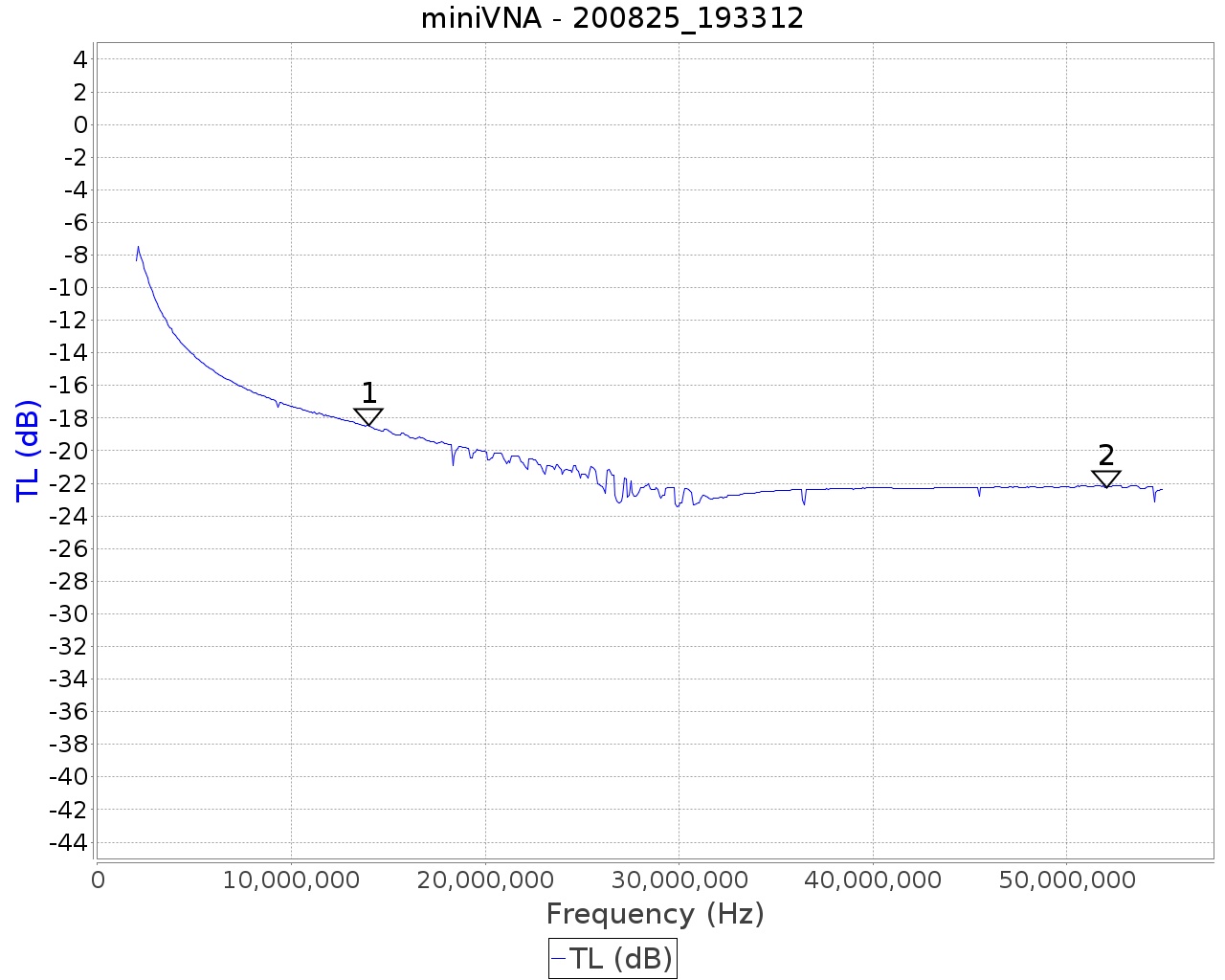
This is already better than 5 beads, W2DU style.
It's also interesting to see what we get by using 3 turns on two beads wound as though it was a binocular core:
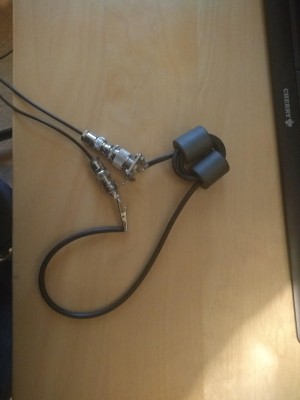
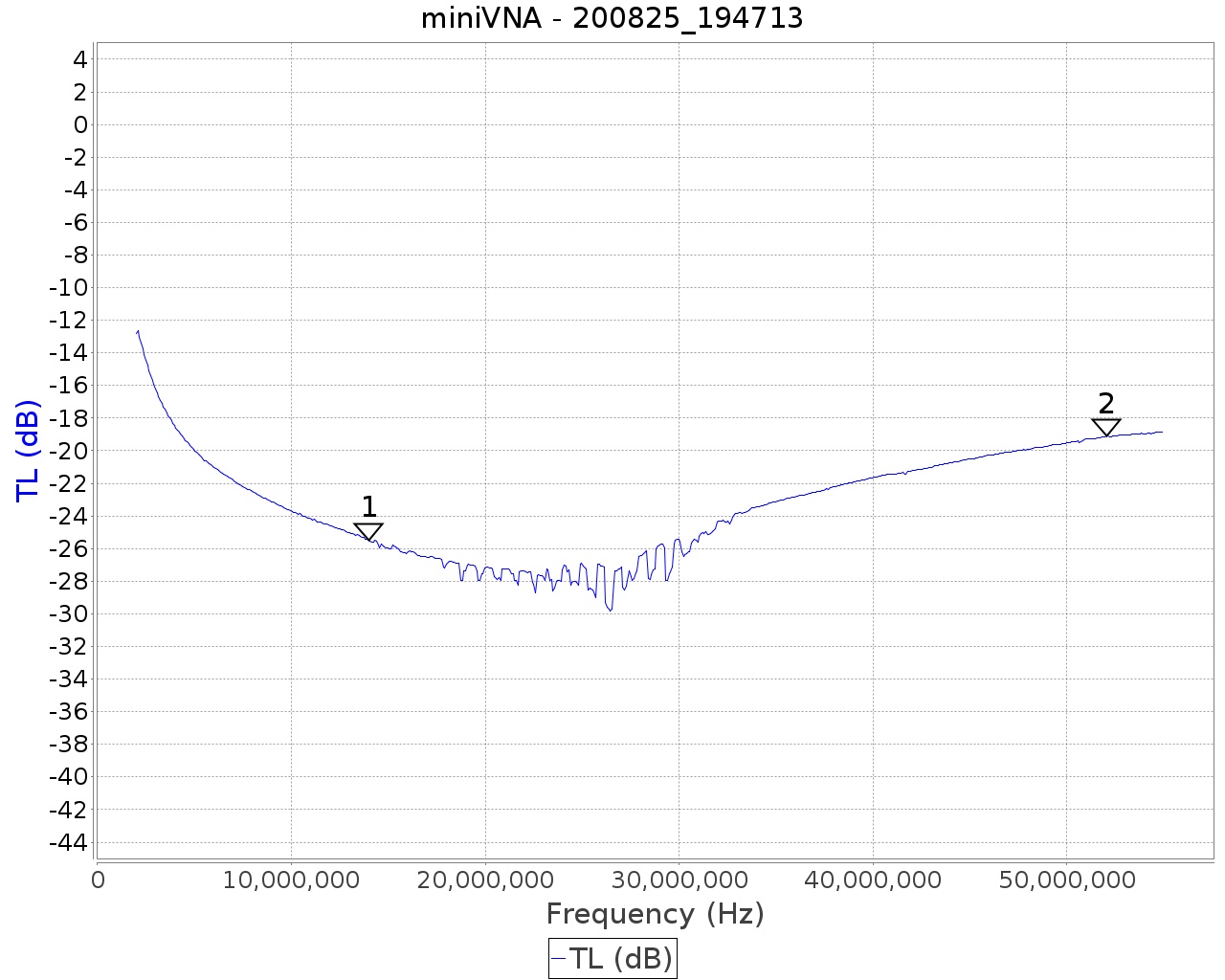
It would seem that we are now seeing self resonance against the inter-winding capacitance. How about if we use two 3-turn chokes in series?
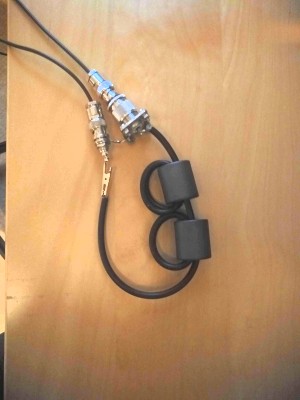
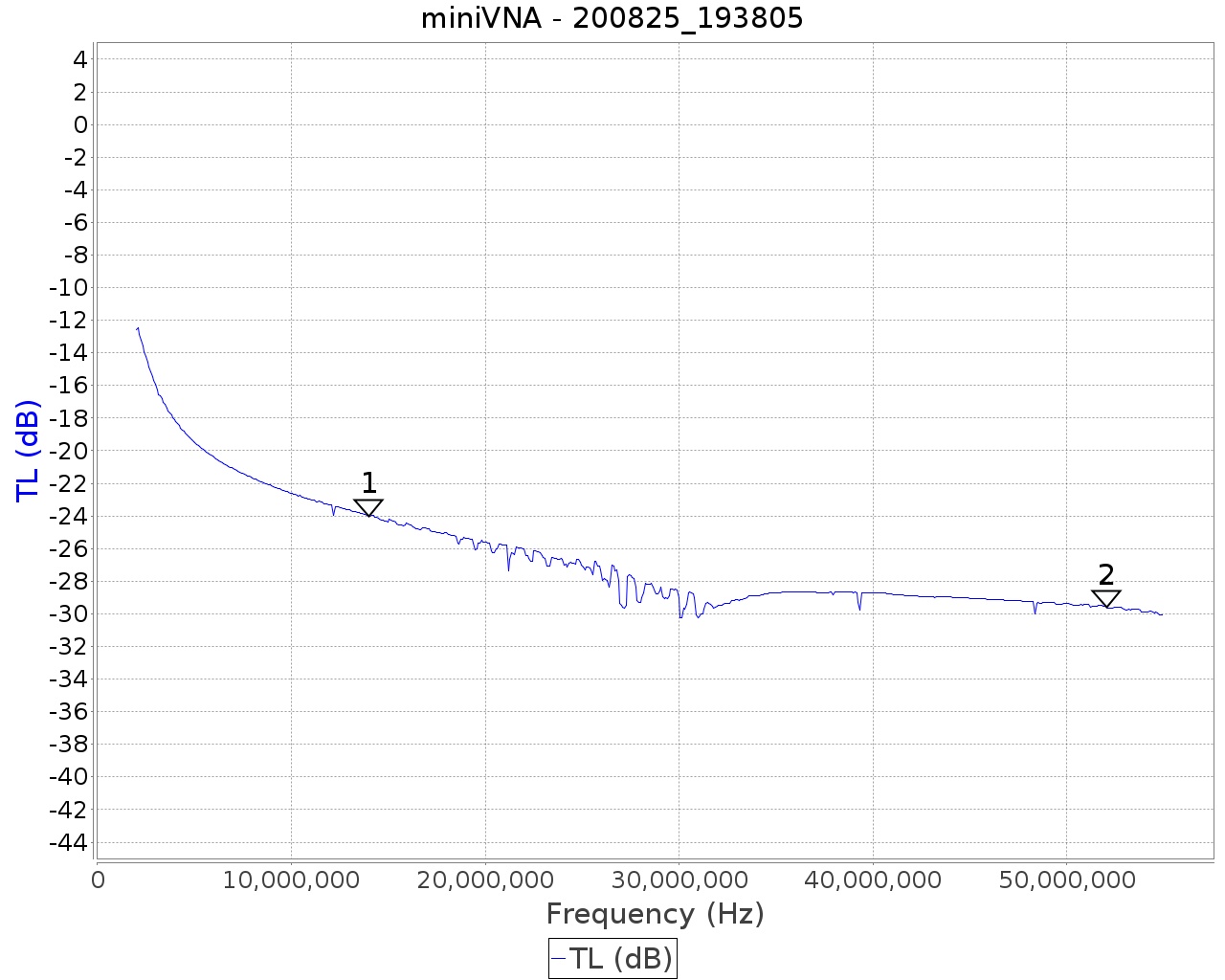
This seems to give better value for two beads, and is really very good now, particularly at 52MHz. In fact, this is what I'm now using on my 6m 5-ele Tonna:
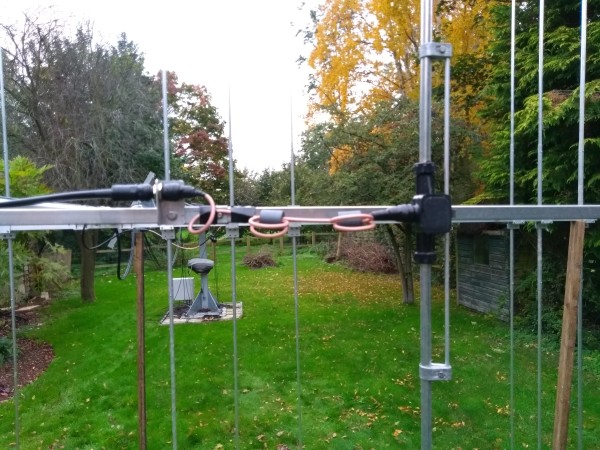
Ferromagnetics "G5RV" balun
Back in the 90s, I bought a couple of these baluns. They're W2DU style choke baluns.
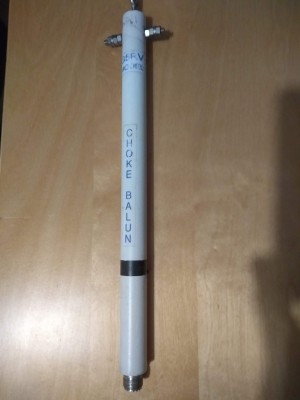
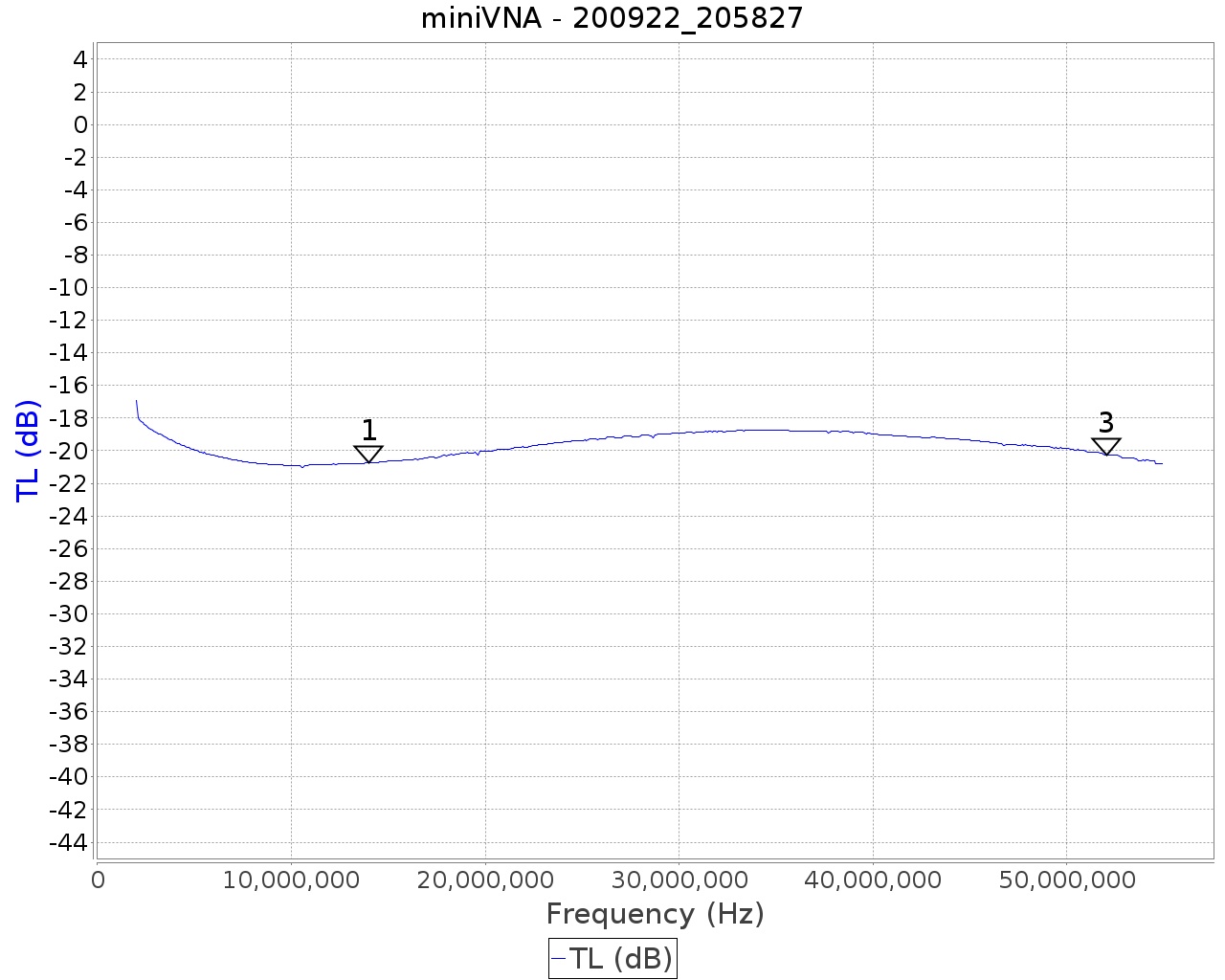
This further illustrates that you can't really get beyond about 20dB isolation with a W2DU style balun, no matter how many beads you use, otherwise we would see the isolation increasing with frequency.
10 Turns of RG58 on FT240-43
Type 43 material is the workhorse for choke baluns.
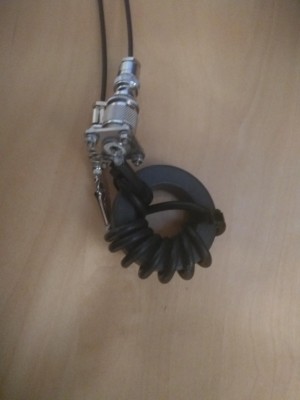
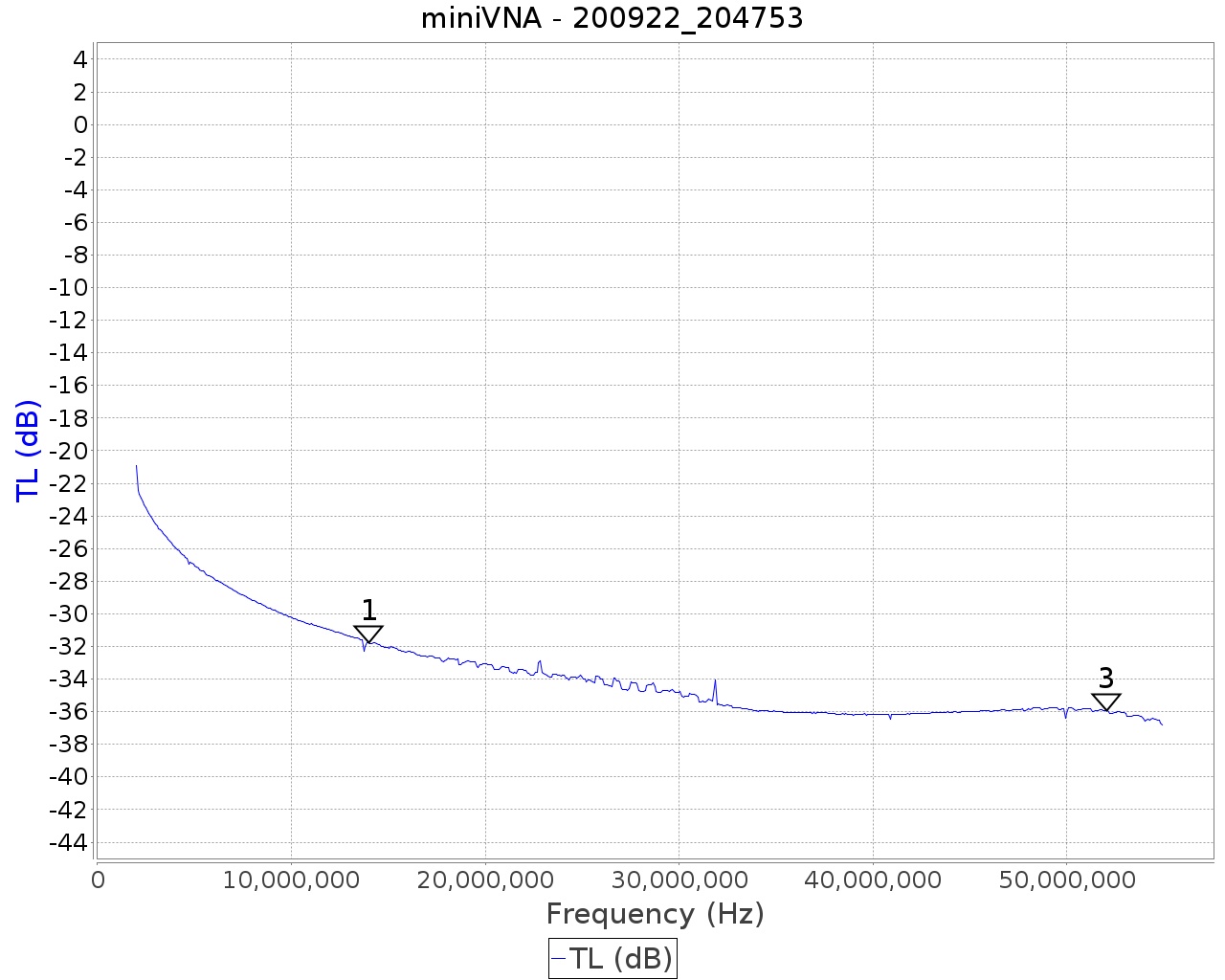
I'm currently using this style of balun on my HF tri-band yagi:
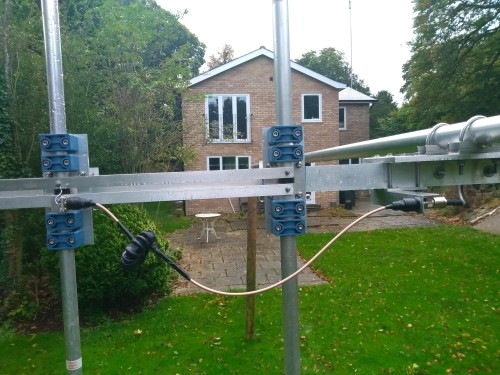
Some cable ties act as strain relief as the RG400 exits the core. These type of tri-band yagis require you to feed the central driven element, rather than the beginning of the phasing line. Note the use of aluminium wire to make the connection - an attempt to avoid dissimilar metal corrosion.
10 Turns of RG58 on FT240-31
Dave (G3UEG) also kindly lent me a type 31 material version to measure:
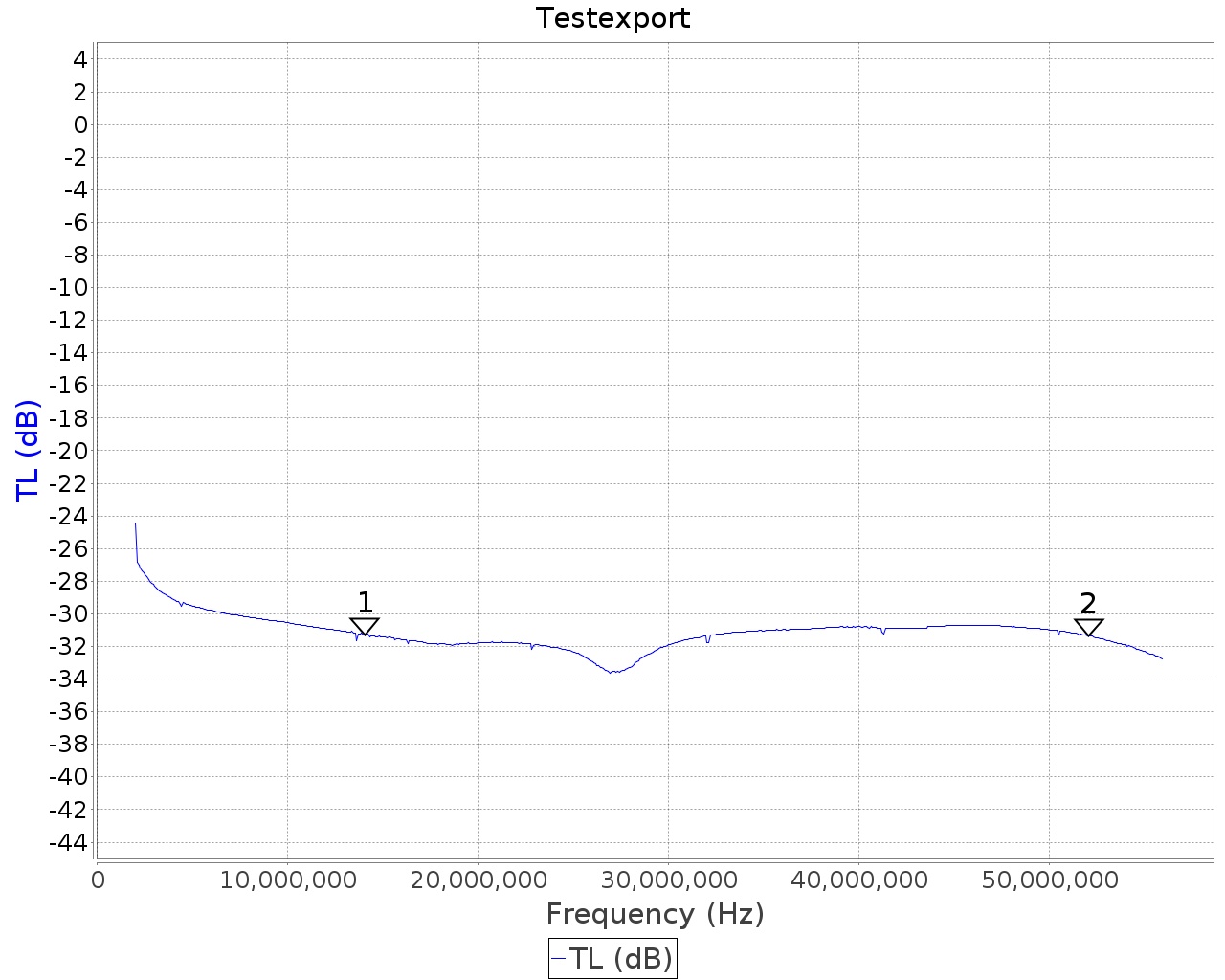
It would seem that type 31 material is better below 14MHz (marker 1), but inferior above 14MHz. The lowest frequency in the sweep is 2MHz, which is still providing a good level of isolation, so it would be a better choice for an all-band choke balun (1.8MHz to 30MHz).
10 Turns of RG58 on FT240-61
Swapping the core for type 61 material, which is sometimes used in baluns in the upper part of the HF spectrum, the following was measured:
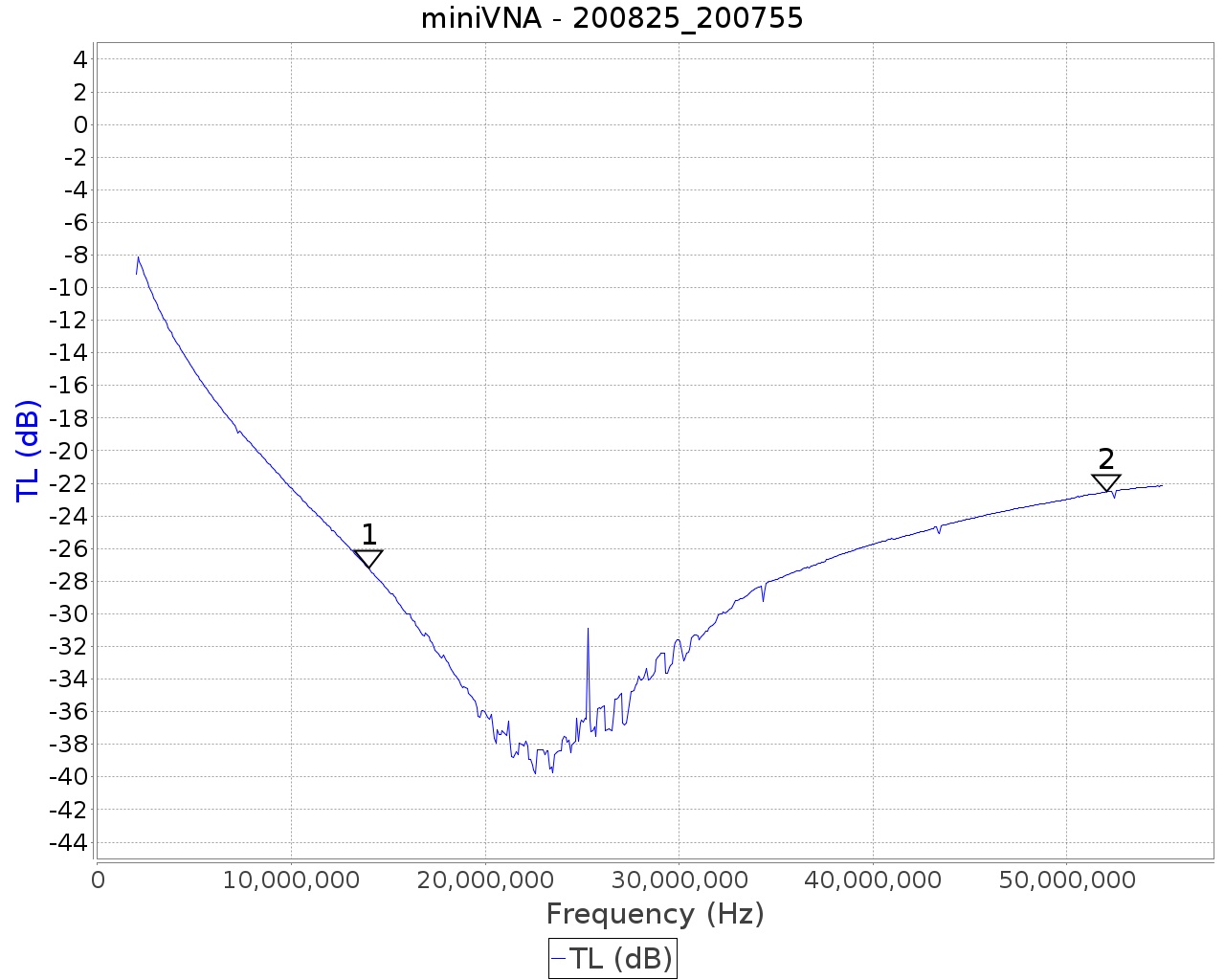
You can now see parallel resonance against the inter-winding capacitance, which offers superior choking isolation, but at the expense of reduced bandwidth. Better overall isolation is obtained with type 43 material.


